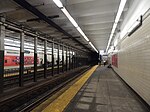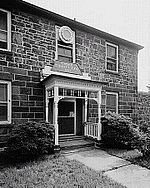New Jersey Institute of Technology (NJIT) is a public research university in Newark, New Jersey with a graduate-degree-granting satellite campus in Jersey City. Founded in 1881 with the support of local industrialists and inventors especially Edward Weston, NJIT opened as Newark Technical School (NTS) in 1885 with 88 students. The school grew into a classic engineering college – Newark College of Engineering (NCE) – and then with the addition of a School of Architecture in 1973, into a polytechnic university that now hosts five colleges and one school. As of fall 2021 the university enrolls about 11,900 students from 83 countries, 2,500 of whom live on its main campus in Newark's University Heights district.NJIT offers 51 undergraduate (Bachelor of Science/Arts) majors and 71 graduate (Masters and PhD) programs. Via its Honors College it also offers professional programs in Healthcare and Law in collaboration with nearby institutions including Rutgers Medical School and Seton Hall Law School. Cross-registration with Rutgers University-Newark which borders its campus is also available. NJIT is classified among the "R1: Doctoral Universities – Very high research activity". It operates the Big Bear Solar Observatory, the Owens Valley Radio Observatory (both in California) and a suite of automated observatories across Antarctica, South America and the US.As of May 2022 the school's founders, faculty and alumni include a Turing Award winner (2011), a Dannie Heineman Prize for Mathematical Physics winner (2015), 9 members of the National Academy of Engineering, 2 members of the National Inventors Hall of Fame, 1 member of the National Academy of Sciences, an astronaut, a National Medal of Technology and Innovation winner, a Congressional Gold Medal winner, a William Bowie Medal winner, multiple IEEE medalists and 18 members of the National Academy of Inventors including 6 senior members. Over the past 20 years NJIT graduates have won, among others, 17 Goldwaters, 6 Fulbrights, 6 Borens, 12 Gilmans, 6 DAADs, an AMGEN Scholarship, an NIH Medical Research Scholarship, 2 GEM Fellowships, a Tau Beta Pi graduate Fellowship, a Humanity in Action Fellowship, a RGSP Scholarship, a Brooke Owens Fellowship and 21 NSF Graduate Research Fellowships.NJIT is a member of the Sea grant and Space grant research consortia. It has participated in the McNair Scholars Program since 1999. It is a designated Asian American Native American Pacific Islander serving institution (AANAPISI). With 19 varsity teams, the NCAA Division I "Highlanders" mainly compete in the America East Conference.




